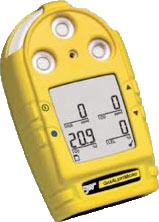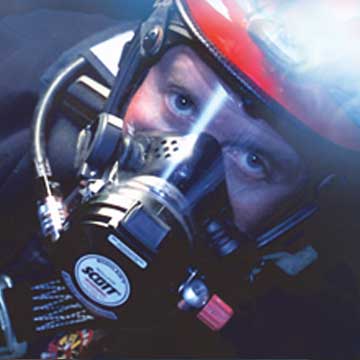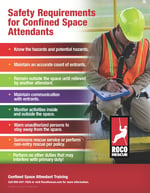Having been involved in training for 30 years, I have had the opportunity to observe how various organizations in many different fields approach confined space entry and rescue. And, when it comes to training for Entrants, Attendants and Entry Supervisors, the amount of time and content varies greatly.
 Most often, training programs treat the three functions as separate, independent roles locked into a hierarchy based on the amount of information to be provided. However, it’s critical to note, if any one of these individuals fails to perform his or her function safely or appropriately, the entire system can fail – resulting in property damage, serious injury or even death in a confined space emergency.
Most often, training programs treat the three functions as separate, independent roles locked into a hierarchy based on the amount of information to be provided. However, it’s critical to note, if any one of these individuals fails to perform his or her function safely or appropriately, the entire system can fail – resulting in property damage, serious injury or even death in a confined space emergency.Before I go any further, I have also seen tremendous programs that foster cooperation between the three functions and use more of a confined space “entry team” approach. This helps to ensure that the entry is performed safely and efficiently.
It also allows all parties to see the overall big picture of a safe entry operation.In this model, all personnel are trained to the same level with each position understanding the other roles as well. This approach serves as “checks and balances” for confirming that:
• The permit program works and is properly followed;
• The permit is accurate for the entry being performed;
• All parties are familiar with the various actions that need to occur; and,
• The team knows what is expected of each other to ensure a SAFE ENTRY!
However, I am often surprised to find that Entrant and Attendant personnel have little information about the entry and the precautions that have been taken. They are relying solely on the Entry Supervisor (or their foreman) to ensure that all safety procedures are in place. If you have a well-tuned permit system and a knowledgeable Entry Supervisor, this may be acceptable, but is it wise? As the quality of the permit program decreases, or the knowledge and experience of the Entry Supervisor is diminished, so is the level of safety.
 In my opinion, depending exclusively on the Entry Supervisor is faulty on a couple of levels. First of all, the amount of blind trust that is required of that one person. From the viewpoint of an Entrant, do they really have your best interest in mind? And, we all know what happens when we “ass-u-me” anything! Plus, it puts the Entry Supervisor out there on their own with no feedback or support for ensuring that all the bases are covered correctly. There are no checks and balances, and no team approach to ensuring safety.
In my opinion, depending exclusively on the Entry Supervisor is faulty on a couple of levels. First of all, the amount of blind trust that is required of that one person. From the viewpoint of an Entrant, do they really have your best interest in mind? And, we all know what happens when we “ass-u-me” anything! Plus, it puts the Entry Supervisor out there on their own with no feedback or support for ensuring that all the bases are covered correctly. There are no checks and balances, and no team approach to ensuring safety.
We may ask Entrants…Who is going to rescue you if something goes wrong? Has the LOTO been properly checked? At what point do you make an emergency exit from the space? What are the acceptable entry conditions, and have these conditions been met? How often should the space be monitored? Typically, the answer is, “I guess when the alarm goes off, or when somebody tells me to get out!”
These are very real scenarios. Scary, but true. It often shows a lack of knowledge and cooperation between the three functions involved in an entry. And, that’s not even considering compliance!We ask, would it not be better to train your confined space entry team to the Entry Supervisor level? Wouldn’t you, as an Entrant, want to know the appropriate testing, procedures and equipment required for the entry and specified on the permit? Would it not make sense to walk down LOTO with the Attendant and Entrant? This would better train these individuals to understand non-atmospheric hazards and controls; potential changes in atmosphere; or, how to employ better air monitoring techniques. All crucial information.
More in-depth training allows the entry team to take personal responsibility for their individual safety as well as that of their fellow team members. It also provides multiple views of the hazards and controls including how it will affect each team member’s role. Having an extra set of eyes is always a good thing – especially when dealing with the hazards of permit spaces. Let’s face it, we’re human and can miss something. Having a better-trained workforce, who is acting as a team, greatly reduces this possibility.
 Many times, we find that the role of Attendant is looked upon as simply a mandated position with few responsibilities. They normally receive the least amount of training and information about the entry. However, the Attendant often serves as the “safety eyes and ears” for the Entry Supervisor, who may have multiple entries occurring at the same time. In reality, the Attendant becomes the “safety monitor” once the Entry Supervisor okays the entry and leaves for other duties. So, there’s no doubt, the better the Attendant understands the hazards, controls, testing and rescue procedures – the safer that entry is going to be!
Many times, we find that the role of Attendant is looked upon as simply a mandated position with few responsibilities. They normally receive the least amount of training and information about the entry. However, the Attendant often serves as the “safety eyes and ears” for the Entry Supervisor, who may have multiple entries occurring at the same time. In reality, the Attendant becomes the “safety monitor” once the Entry Supervisor okays the entry and leaves for other duties. So, there’s no doubt, the better the Attendant understands the hazards, controls, testing and rescue procedures – the safer that entry is going to be!As previously mentioned, training requirements for Entrant, Attendant and Supervisor are all over the board with little guidance as to how much training or how in-depth that training should be. Common sense tells us that it makes better sense to train entry personnel for their jobs while raising expectations of their knowledge base.
OSHA begins to address some base qualifications in the new Confined Spaces in Construction standard (1926 Subpart AA) by requiring that all confined spaces be identified and evaluated by a “competent person.” It also requires the Entry Supervisor to be a “qualified person.” Does the regulation go far enough? We don’t think so, nor do some of the facilities who require formal, in-depth training courses for their Entrant, Attendant and Entry Supervisor personnel.
• Competent person: “One who is capable of identifying existing and predictable hazards in the surroundings or working conditions which are unsanitary, hazardous, or dangerous to employees, and who has the authorization to take prompt corrective measures to eliminate them.”
• Qualified person: “One who, by possession of a recognized degree, certificate, or professional standing, or who by extensive knowledge, training, and experience, has successfully demonstrated his ability to solve or resolve problems relating to the subject matter, the work, or the project.”
So, do yourself a favor…go out and interview your Entrants and Attendants on a job.Find out how much they do (or don’t) understand about the entry and its safety requirements. Do not reprimand them for not knowing, as it may not be their fault. It may be a systemic deficiency and the training mentality of distributing a hierarchy of knowledge based on job assignment.
Simply put, we believe that arming the entry team with additional information results in safer, more effective confined space operations. After all, isn’t that what it’s all about? GO TEAM!
Additional Resources:
Safe Entry Workshop: Entrant, Attendant & Entry Supervisor is now available. See the full course description for details.

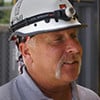
 There are countless injuries and deaths across the nation when workers are not taught to recognize the inherent dangers of permit spaces. They are not trained when "not to enter" for their own safety. Many of these tragedies could be averted if workers were taught to recognize the dangers and know when NOT to enter a confined space.
There are countless injuries and deaths across the nation when workers are not taught to recognize the inherent dangers of permit spaces. They are not trained when "not to enter" for their own safety. Many of these tragedies could be averted if workers were taught to recognize the dangers and know when NOT to enter a confined space. The DPW had developed a permit-required confined space program but stopped implementing it in 2004 when the last trained employee retired. They also had purchased a four-gas (oxygen, hydrogen sulfide, carbon monoxide and combustible gases) monitor and a retrieval tripod to be used during the training. It was reported that a permit-required confined space program was never developed because DPW policy “prohibited workers” from entering a manhole. However, the no-entry policy was not enforced. Numerous incidents of workers entering manholes were confirmed by employee interviews.
The DPW had developed a permit-required confined space program but stopped implementing it in 2004 when the last trained employee retired. They also had purchased a four-gas (oxygen, hydrogen sulfide, carbon monoxide and combustible gases) monitor and a retrieval tripod to be used during the training. It was reported that a permit-required confined space program was never developed because DPW policy “prohibited workers” from entering a manhole. However, the no-entry policy was not enforced. Numerous incidents of workers entering manholes were confirmed by employee interviews.
 Back in the day, most sites typically only offered fire brigade training for their emergency responders. Eventually, medical was added, then hazmat, and finally confined space rescue – primarily in response to OSHA 1910.146. And, with permit-required confined spaces, most often comes the need for high angle rescue abilities as well. Once a victim is removed from a confined space, there is generally the need for raising or lowering the victim to ground level for medical transport.
Back in the day, most sites typically only offered fire brigade training for their emergency responders. Eventually, medical was added, then hazmat, and finally confined space rescue – primarily in response to OSHA 1910.146. And, with permit-required confined spaces, most often comes the need for high angle rescue abilities as well. Once a victim is removed from a confined space, there is generally the need for raising or lowering the victim to ground level for medical transport. Suspended Worker Rescue (Rescue from Fall Protection)
Suspended Worker Rescue (Rescue from Fall Protection)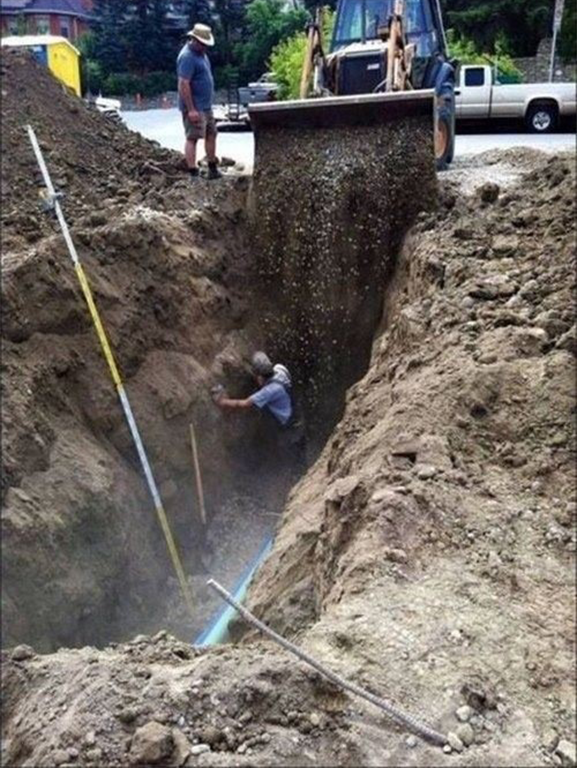 Trench Rescue
Trench Rescue Machinery Entrapment Rescue
Machinery Entrapment Rescue
 Building Collapse Rescue for First Responders
Building Collapse Rescue for First Responders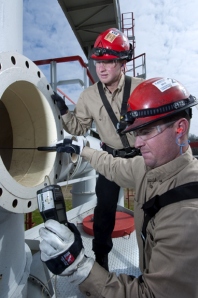
 The purpose of the entry was for remediation of mercury contamination on the concrete surface. The gross cleanup of liquid mercury had been performed years prior, but further action was required to eliminate vapor hazards still present in the lower chambers.
The purpose of the entry was for remediation of mercury contamination on the concrete surface. The gross cleanup of liquid mercury had been performed years prior, but further action was required to eliminate vapor hazards still present in the lower chambers.